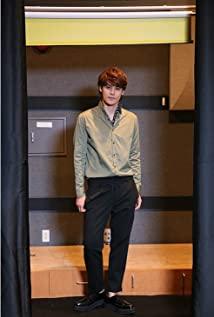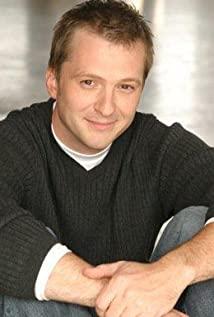However, I still have to rewrite because this work is so good! Decisively switch to Chrome.
I haven't played games, so I'm just talking about anime. Let's talk about the style of painting first. When I read the film review before, some people said that the picture is not as good as the game. In fact, this phenomenon has not been interrupted since many animations adapted from plot games were released. For example, "Yosuga no Sora", "Saka Road Dyed in Akane" and "Fate/stay night", some people say that the characters are broken and there is no detail in the game.
However, this is an animation, not a game. Anyone who knows the animation production process must know that it is almost impossible to keep the details of the characters in the game in the animation, especially the light and shadow effects - it does not mean that it is technically impossible. But the cost does not allow. In this way, the average completion time of a picture in galgame (because the picture quality in this type of game is very guaranteed, so take it as an example) is more than 10 hours. I myself often digitally draw anime doujinshi, and I feel the same way. If you want animation to ensure the quality of the game, let’s calculate, “Steins;Gate” has 24 episodes, each episode is 24 minutes, and 24 frames per second, considering the reuse of character actions, reduce the actual number of frames. That is also exhausting, how can you make money? Personally, I think the quality of Steins;Gate is pretty good.
Well, let's talk about the essence of this work - the story.
1. The plot
If you gave up this work because of the neurotic performance of the male lead Okabe in the first 6 episodes and the slow plot development, I can only say that it is really a pity. The foreshadowing of these 6 episodes has its reasons. In fact, when I watched the first few episodes myself, I found it a little boring. However, the few words Okabe said to himself on the phone at the beginning of the story caught my attention. Not only because of its content, but also because the way it breaks sentences is very close to a short story in "Carnival of Genius" I read in 2007.
I'm ashamed to say, I didn't start to understand until I saw episode 7. So after watching episode 7, I watched it again from episode 1. From the seventh episode, the main line of the story also emerges.
Especially at the end, I finally understood why Okabe heard a male cry before seeing Makase Kurisu in a pool of blood. The more I look at the back, the more I feel the rigor of the narrative of this work and the necessity of forging ahead.
The key reason why the plot of this work can develop is that our protagonist - after the world line changes, still has the memory before the world line changes.
2. Characters
Speaking of characters, I think it is no trivial matter that "Seto no Hanayome" has portrayed so many distinct characters in only 26 episodes. Although "Steins;Gate" does not have many characters, the feeling of each character is ups and downs.
Rentaro Okabe (Phoenix Academy Fierce): As the male protagonist, there is no need to say, there is flesh and blood.
Makase Kurisu (Christina): As said in the anime, Tsundere.
Shiina Mayuri (dudulu): My feeling is that she is naturally dumb, very cute, as if she can see through fate.
Hashida Tochi (barrel): In the works in recent years, why are all the technical houses fat? The "underpants man" in "Eden of the East", and Hirano Toda in "School Apocalypse". But as far as the house property is concerned, the bucket wins. Tucao is very powerful~
Awanyin Lingyu (part-time soldier): No matter how you look at it, it is a fighting type.
Kiryu Moeyu (flickering finger presser): I don't like the eye attribute, but Takajo Saya in "School Revelation" is fine. There is cuteness in the name, not cute at all. But in terms of character characterization alone, it was a success.
Akiba Rumiho (Phyllis Meow): Too cute! Akihabara properties, do not explain.
Urushihara Liuhua (pseudo-girl): A role that exists purely for pseudo-girls and gao-based.
3. Time Machine/Causality
To say that the main reason I am fascinated by this anime is another interpretation of the time machine in it (relative to the movie "Time Machine"). I don't know if you have seen the movie "Time Machine", if you haven't, I recommend you watch it.
Before reading the following content, I want to use a four-dimensional coordinate system to represent the space we can perceive with the naked eye: the x-axis, the y-axis, the z-axis, and the time-axis t-axis. We can feel the movement of macroscopic objects and can find a common reference - time. That is to say, the spatial position function of an object can be written as f(x,y,z)=g(t). I have not included microscopic objects here because of the uncertainty of microscopic particles.
Anime borrows the world line proposed by John Titor, that is, the timeline mentioned above. It says that each of us has an unknown number of timelines, and our experiences on each timeline are different. That is to say, the variable t in the four-dimensional space can be written as the rule t(a, b), where a represents one of many time axes, and b represents a certain point/moment on the time axis pointed to by a. In other words, time has changed from one dimension to two dimensions. Writing here, I actually thought of dynamic programming and genetic algorithms. . sweat. . In the last semester, the experience of writing power generation allocation program using dynamic programming method. .
Let me first state the two implementations of time travel in Steins;Gate.
(1) Telephone Oven (tentative name)/Dmail: Change the time axis and a in the rule t(a,b). We can see by sending Dmail a few times that it changes the law of causality, which can cause events to happen or not. Therefore, the change of a will cause the memory of all people to change. This article calls it the first method.
(2) Time jump: change the moment, but do not change the time axis, and b in the rule t(a,b). Therefore, the change of b will only affect the memory of the person performing the time jump, and will not change the law of causality. This article calls it the second way.
The movie "Time Machine" uses the second method. This reminds me again of the movie "Source Code" released last year, which uses the first method. Anyone who has played the game "Steins;Gate" should know that it was released in 2009. So, readers, think for yourself. .
Back to the topic, through the first method, if the person's own memory is also tampered with, it will not make any sense. In the second way, the facts cannot be changed at all, only the memory of the person involved is changed, so it is just time travel. Or to put it this way, the first way is to jump between different timelines, and the second way is to jump at different moments in the same timeline.
We can also notice this through the constant presence of time in the anime.
As John Titor said, the value of Rintaro Okabe, the protagonist of this work, is reflected - "You may be able to lead the world to cross the 1% rate of change of the world line". Because Okabe still retains the memory before crossing the time axis after the time travel through the first method. Then there is a frame of reference, which is Okabe's experience. According to this frame of reference, Okabe changes the law of causality in two ways, or, in other words, seeks and confirms the correctness of the time axis.
If Okabe does not lead the world to cross the 1% rate of change of the world line, even if he uses other methods to let Makase Kurisu and Shiina Mayuri pass the "death period" of Shiina Mayuri safely, he will not be able to escape the third world. Great War, and the fact that he is dead before 2036.
(Why can't you pass pictures..)
In other words, everything Okabe did was to find a timeline. On this timeline, the cause of Makase Kurisu's death was discovered, and he deceived himself at that time. In this way, the timeline where the self who was successfully "deceived" is the timeline where World War 3 will not occur. Let me call this timeline the w timeline. The question is, how to let the self in that timeline have the memories of what they are experiencing now.
So I was confused, the injured Okabe (called Okabe s) in the time machine could never exist in the w timeline in the end, because he already existed in the w timeline. Obviously what they want to get is also the actual situation in the w timeline. Therefore, the timeline where the ending is located is the w timeline. However, at 16:27 of the 24th episode, the "worker warrior" said "what you will face next is the longest and most precious three weeks of your life", referring to the injured Okabe, or in the w timeline The Okabe (called Okabe w)? It can't be Okabe s, if it is, then where is the Okabe w that originally existed in the w timeline? Then if it's not Okabe s, but Okabe w, then why did Okabe w come out of the hospital?
(For those three weeks, I looked at the July 28th and August 21st subtitle clips that appear at the beginning and end of the anime)
Could it be? Got a serious illness, spent 3 weeks in the hospital, and then had 3 weeks of dreams? Suddenly I remembered that in an episode Mayuri said that Okabe had a serious illness when they were young, so Okabe also suspected that he was affected by the law of causality at that time. Could these be used for theatrical material, if any?
4. Can this anime add harem attributes?
When I just finished watching "Fate/stay night" N years ago, I didn't think it was a harem. After a master pointed out the lost scriptures, I was enlightened.
PS: Wow. . Day is bright. .
View more about Steins;Gate reviews











